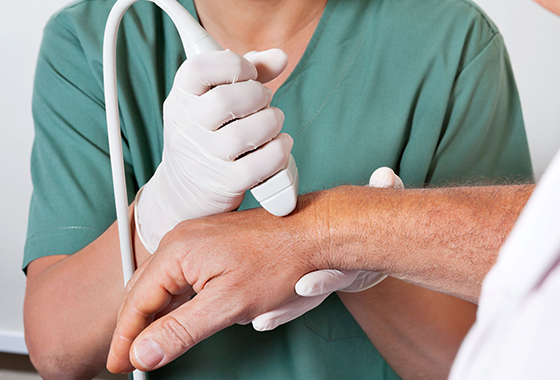Carpal tunnel syndrome results in numbness, tingling and weakness due to pressure on the median nerve. Located in the wrist, the median nerve travels through a narrow passageway known as the carpal tunnel. Should the passageway be narrowed, pressure is placed on the nerve and the symptoms of carpal tunnel syndrome occur. An ultrasound may be used in order to confirm a diagnosis of carpal tunnel syndrome.

Specialties
Neurology
Pain Management
Diagnostic Tests
Therapeutic Procedures
The practice of using ultrasound for diagnosing carpal tunnel is relatively new. This new diagnostic method provides high quality images of the median nerve relatively inexpensively. Additionally, the process of ultrasound provides a look at other structures within the wrist including the soft tissue. The exam may be performed in an office setting as a part of a physical exam.
Your doctor will provide specific instructions before the test. Given the noninvasive nature of the test, there is little preparation needed. Patients may be advised to wear clothing that provides easy access to the wrist or to avoid using certain lotions. Typically, there is not a need to discontinue to change medication dosages prior to the test. Prior to the test, be sure to ask your doctor or nurse about any questions you may have.
Ultrasound is a noninvasive and painless procedure. During the procedure a probe will be placed along the wrist in order to take images. Typically, a gel is used to increase conductivity and to ensure there is a smooth connection with the skin order to obtain the best images. The procedure itself is relatively quick and should be complete in under 30 minutes.
After the test, the gel is wiped away. There are no lasting effects and the patient can return to normal activity immediately. Results are typically provided within a couple of days.
Copyright © 2024 Cayman Neurologist. All Rights Reserved.